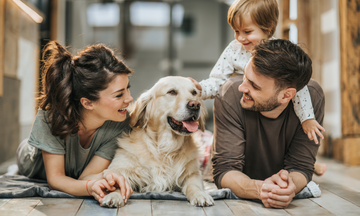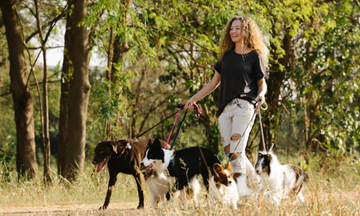Dogs are more than just pets—they’re companions, protectors, and family. But to build a strong, respectful relationship with your dog, understanding their behavior and implementing proper training is essential. Whether you're bringing home a new puppy or working with an older rescue, this guide will give you the foundation to raise a well-mannered and emotionally balanced dog.
Why Dog Behavior Matters
Understanding your dog’s behavior is key to effective communication. Dogs don’t act out of spite or malice; their actions are instinctual or learned based on previous experiences. Barking, chewing, jumping, and digging are all normal behaviors—until they become excessive or inappropriate.
Most behavioral issues stem from:
- Lack of physical and mental stimulation
- Inconsistent rules or boundaries
- Fear or anxiety
- Poor socialization
- Medical issues
Instead of punishing your dog, the goal is to find the why behind the behavior and correct it in a way they understand.
Foundational Training Principles
Dog training is about clear communication, consistency, and positive reinforcement. Here are some fundamental principles:
1. Timing is Everything
Dogs live in the moment. Praise or correct your dog immediately after the behavior so they associate the consequence with the action.
2. Consistency Builds Trust
If jumping on the couch is allowed one day and scolded the next, your dog will be confused. Consistent rules help dogs feel secure.
3. Positive Reinforcement Works Best
Rewarding good behavior (treats, praise, playtime) is far more effective than punishing bad behavior. Dogs repeat what works for them.
4. Short, Frequent Sessions
Keep training sessions 5–15 minutes long and repeat them daily. End on a positive note so your dog stays motivated.
Essential Training Commands
Here are some key commands every dog should know:
- Sit: A basic for self-control and redirection.
- Stay: Teaches patience and prevents bolting.
- Come: A life-saving recall command.
- Leave it/Drop it: Prevents ingestion of harmful items.
- Heel/Loose leash walking: Encourages good walking behavior.
Each command should be taught using a cue word, consistent tone, and rewards. Practice in low-distraction environments before introducing harder scenarios.
Socialization: The Unsung Hero of Training
Socialization is exposing your dog to a variety of people, dogs, environments, and experiences. A well-socialized dog is less anxious, less reactive, and more adaptable.
Puppies go through a critical socialization period (3–14 weeks). During this time, gently introduce them to:
- Other dogs and animals
- People of all ages
- Car rides, loud noises, grooming tools
- Different surfaces and locations
Older dogs can still be socialized, but the process is slower and requires patience.
Common Behavior Issues and How to Fix Them
1. Excessive Barking
Dogs bark to communicate. Identify the trigger: is it boredom, fear, territoriality, or excitement? Train a “quiet” command, provide more enrichment, and avoid reinforcing barking (e.g., yelling).
2. Destructive Chewing
Chewing relieves stress and boredom. Make sure your dog has access to chew toys and remove temptations. Praise them when they chew approved items.
3. Jumping on People
Dogs jump to greet or seek attention. Turn away and ignore the behavior until your dog has all four paws on the ground—then reward them.
4. Separation Anxiety
This stems from fear of being alone. Signs include whining, destructive behavior, or house soiling. Start with short departures, create a calm goodbye routine, and consider crate training or calming aids.
Tools That Can Help
- Clickers: Use them to mark desired behaviors with a sound, followed by a treat.
- Crates: A safe space, not a punishment. Crate training helps with housebreaking and anxiety.
- Long lines: Great for training recall in open areas without the risk of your dog running off.
- Treat pouches: Keep rewards accessible during walks or sessions.
When to Seek Professional Help
If you're struggling with aggression, resource guarding, severe anxiety, or training isn’t making progress, it’s worth hiring a certified dog trainer or behaviorist. Look for professionals who use force-free, science-based methods.
The Human Side of Training
Training a dog isn’t just about commands—it’s about building a relationship. It requires patience, empathy, and commitment. Every dog learns at their own pace, and every mistake is a chance to grow.
Training isn’t a one-time event; it’s a lifelong practice. Just like us, dogs need regular mental stimulation and consistent boundaries to thrive.



